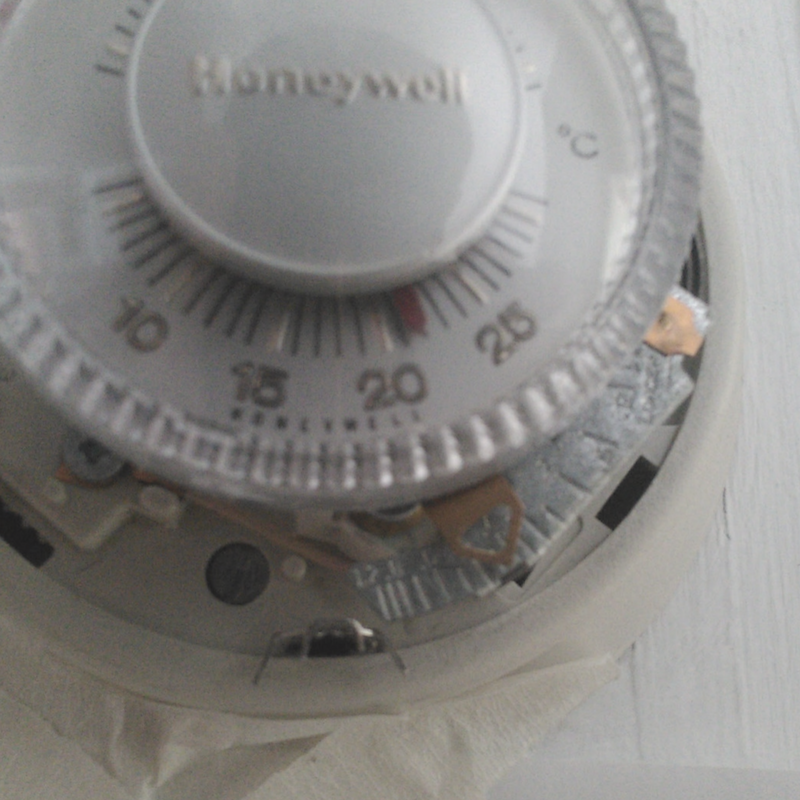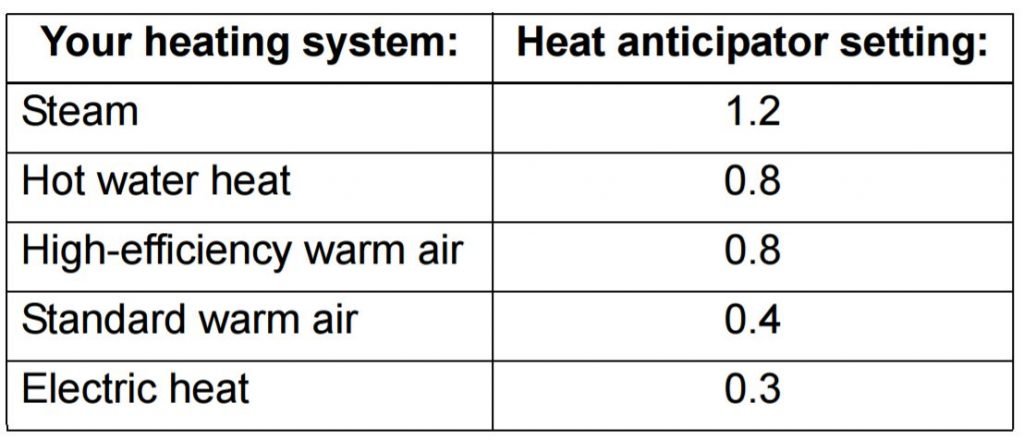Get Tech Tips
Subscribe to free tech tips.
The Good Old Heat Anticipator

As a technician, you most likely know some customers who still have an oldie thermostat (you know, those old mercury bulb things, like the round Honeywell CT87 and such). Keep in mind that those usually have an adjustable heat anticipator. If you’re newer in the field, you may not have seen or worked with those very much, maybe not at all. They can seem confusing at first (why is it set with amperage? What amperage? How am I actually adjusting this???), but they are actually quite simple to work with.
First of all, I hear you thinking, “Do you actually need to adjust that? I mean, is it going to make that much of a difference?” Honestly, in most cases, no, it won’t make a big difference. But that’s no reason to ignore it, and when it actually does make a difference, you will want to know how to adjust it properly.
Here’s a hypothetical story: you just changed a system, let’s say converted from a 30-year-old oil furnace to a brand new condensing gas furnace. The homeowner just loves their old, simple ‘’I-just-have-to-turn-it-up-or-down’’ thermostat and won’t upgrade it to a modern digital one. And hey, it still works fine, so why bother? Then, a few days later, you get this service call:
“You know that new furnace you guys just put in? It doesn’t work right! It keeps starting and stopping every 5 minutes! (or) It stays on for too long and overshoots the set temperature by a whole degree!”
And then there's the line that everybody loves to hear:
“It didn’t do that with my old furnace! It’s that new one, you sold me defective garbage equipment!!!”
Okay, it doesn’t happen like that all the time, but I’m sure you’ve heard of similar stories. Now, to focus on the problem. I’m writing this tip about heat anticipators, but please don’t assume that will be the issue whenever you get this kind of service call. I am merely reminding you that it is one of the many possible problems. So, let’s say everything else is normal—no faults occurring during furnace cycles, no airflow issues, proper system sizing, etc. There’s a chance a very poorly adjusted heat anticipator will make a significant difference in cycle time. After all, that’s what it’s designed to do.
In short, the anticipator is simply a resistor built into the thermostat that is in series with the heat call low voltage circuit (i.e., the “W” terminal). That resistor generates a tiny amount of heat to preheat the bi-metal and end the furnace cycle a little bit earlier, anticipating the residual heat from the furnace and fan off delay to cover the temperature gap and avoid overheating the space. Now, even though it’s a resistor, you don’t set it by ohms. You set it by amperage—the amperage drawn by the heat control circuit.
It takes a little bit of effort to get that measurement correct, but it is quite simple. First of all, you need to remove the anticipator itself from the circuit when checking the control’s amp draw! All this means is that you need to remove the thermostat from the circuit by twisting together the R and W wires at the thermostat. This action will, obviously, give you a constant call for heat.

Now, the amperage you need to measure is typically very low—no more than half an amp in most cases, sometimes much lower. So, to get a more precise reading (unless you have a super sweet meter that gives you precise readings in the tenths to hundredths of an amp range; you would do this in series instead of with a clamp), you should proceed as follows:
- Get a nice, very long piece of thermostat wire, which you will repeatedly wrap around your meter clamp, so it goes through it 10 times.
- Connect that wire to your W wire from the thermostat on one end and to the W terminal on your furnace control on the other end. Simply put, just extend the W wire so that you have enough to wrap it around the clamp ten times.
- Turn the power on and let the furnace cycle begin.
Wait until all the relays and components are energized (on a typical gas furnace, you will see the greatest amp draw coming when the gas valve is energized), and then take your reading. Divide it by 10, and you have your heat anticipator adjustment value. Simple as that.
For example, you might read (completely arbitrarily) 2.40 amps on your meter with ten wraps of wire, which means the control actually draws 0.24 amps, so you will need to set your heat anticipator to 0.24. It is recommended to insert the tip of a pen or something similar in the slot to slide the needle gently to the desired setting. This procedure, by the way, is still explained in modern install manuals.
Honeywell also gives a basic guideline for different heat types:

To adjust cycle times further, if the actual setting doesn’t seem to work quite right, you may change it accordingly:
Higher amperage setting = longer cycle time lower setting = shorter run time
I wouldn’t stray too much from the ‘’proper’’ setting, however.

—Ben Mongeau











Comments
The Honeywell chart lists the anticipation setting for high efficiency furnaces as 0.8. Yet I have found that the anticipation setting for high efficiency furnaces to be much higher around 1.8 times the actual amp draw. Example Lennox G21Q high efficiency Pulse lists the required heat anticipation of 0.64. Yet the actual amp draw is nearer to 0.36 amps. If the 0.8 setting were to be used the setting would be 0.28. This would create a higher amount of heat cycling the thermostat and furnace before actual room temperature is reached. Have some reservations using that Honeywell chart. They list electric furnace heat anticipation of 0.3 regardless of whether the electric furnace is operated by heat sequencers that have a delay before energizing the blower and heat strips or a relay, such as is on Trane units, that energizes the blower and electric heat elements immediately upon a call for heat.
The Honeywell chart lists the anticipation setting for high efficiency furnaces as 0.8. Yet I have found that the anticipation setting for high efficiency furnaces to be much higher around 1.8 times the actual amp draw. Example Lennox G21Q high efficiency Pulse lists the required heat anticipation of 0.64. Yet the actual amp draw is nearer to 0.36 amps. If the 0.8 setting were to be used the setting would be 0.28. This would create a higher amount of heat cycling the thermostat and furnace before actual room temperature is reached. Have some reservations using that Honeywell chart. They list electric furnace heat anticipation of 0.3 regardless of whether the electric furnace is operated by heat sequencers that have a delay before energizing the blower and heat strips or a relay, such as is on Trane units, that energizes the blower and electric heat elements immediately upon a call for heat.
You are absolutely correct. I am an Hvac technician of 40 years and have experienced this situation numerous times.
You are absolutely correct. I am an Hvac technician of 40 years and have experienced this situation numerous times.
To leave a comment, you need to log in.
Log In